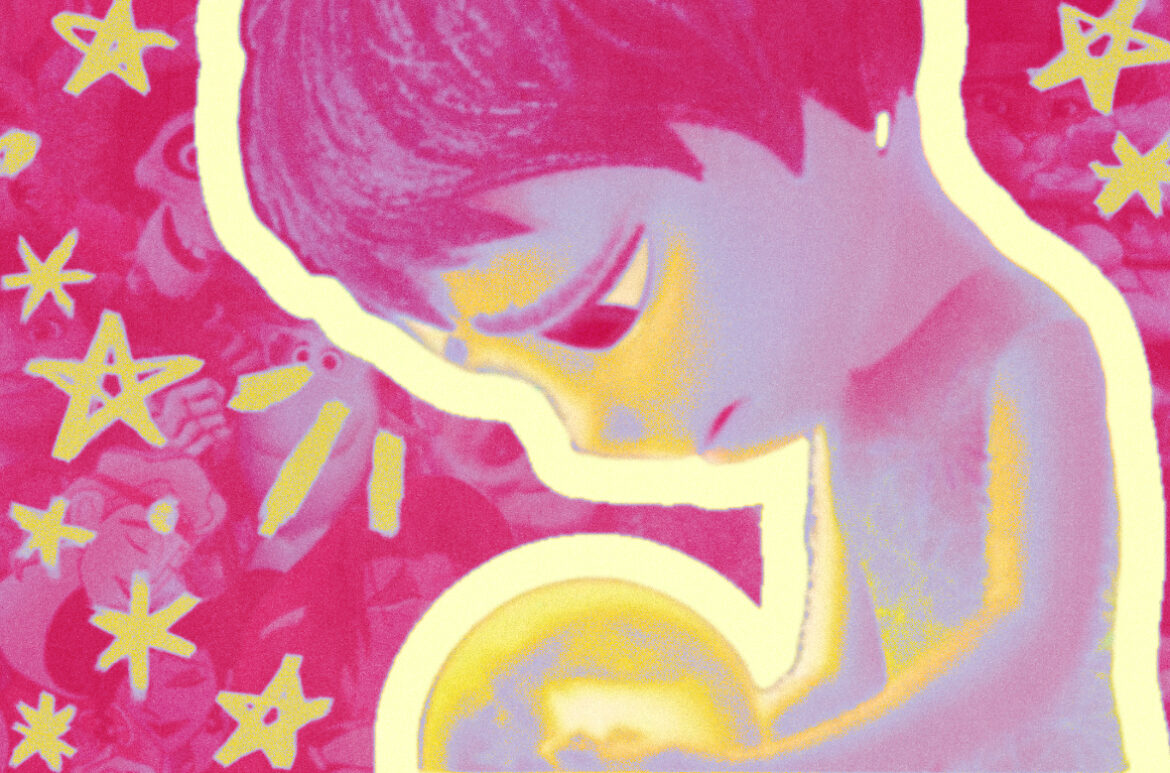Graphic by Annabelle Gilman
At the 94th Academy Awards in 2022, the live-action actresses of the Disney princesses announced the winner of Best Animated Film.
“All these characters hold such a special place in our hearts because animated films make up some of our most formative movie experiences as kids,” The Little Mermaid actress Halle Bailey began.
“So many kids watch these movies over and over, over and over again,” Cinderella actress Lily James said, slightly exasperated.
“I see some parents who know exactly what we’re talking about,” Aladdin actress Naomi Scott said, addressing the audience.
It’s one thing to read lines on a camera or create dynamic sets for a live-action film, but the medium of animation does both, and then some. Every single frame is drawn from scratch, from the character and their movements to the world around them. Despite having immense storytelling potential, animation often gets the short end of the stick. Even as the princess actresses brought these classics to life, they seemingly infantilized animated movies.
This attitude is offensive not only to the viewers of these films, but to their creators as well. Even with the immense amount of effort that goes into making animated movies, the genre is often reduced to mindless content made for kids. Most animated movies are given a G or PG rating which are child and family appropriate, respectively. While this may imply animated movies are childish, ironically, many animated movies today are filled with death.
Whether it is the parents of the protagonist dying in the first few minutes in Frozen or the epic finale where the villain succumbs to a fatal fate like in The Hunchback of Notre Dame or The Princess and the Frog, it is somewhat of an oxymoron to call animated movies “childish,” as they often deal with serious topics. These movies are not outliers; there are videos dedicated to Disney’s “body count,” which counts how many characters have died in Disney movies. While these films may be magical or fantastical in plot, the moral truths of death and life covered in them often stir conversations about mortality.
“Despite the fact that we would love to have people or animals or our loved ones forever, death is inevitable,” explained Bonnie Nickels, co-writer of the study End-of-Life in Disney and Pixar Films: An opportunity for Engaging in Difficult Conversation. “We can use these films as opportunities to introduce our young viewers and our young children to this idea.”
To Nickels, these movies can create a dialogue between parents and children about dying and even model coping methods. “The fact that it’s a common feature in these films, kind of reiterates this idea that it’s common in life.”
Death is not easy to deal with or understand regardless of age. For children, there are fundamental concepts that go into the understanding of death that coincide with their stages of development.
“There are four things you see kids kind of navigate through and think about death. It’s really around 7 years old that kids start to have this concrete understanding of what death means,” said Dr. Amanda Oliva, a clinical psychologist at the Mind Body Clinical Research Center of Stony Brook University Hospital. “It doesn’t mean by age seven they understand everything, but overall there’s a developmental stage that happens at that age.”
The first component of understanding death is understanding inevitability — as much as we try to outrun it, every living thing will eventually die. Despite being a universal idea, it still invokes fear in children and adults alike.
The second is finality or irreversibility. There is no coming back from death. Once someone dies, we must live with their absence.
Causality, the third, is why people die — what leads up to someone dying whether they are killed or succumb to old age or disease. Children may struggle to understand this concept and studies have suggested some blame themselves.
Lastly, functionality is understanding that the body on a biological level no longer functions — it’s distinguishing that they can no longer breathe, talk or move compared to their living counterparts.
Children of all ages may handle or struggle with each topic regarding death, depending on their development and what they have experienced.
“A lot of times kids have this magical thinking that death means that someone is away for a while, but they’ll come back or that something magical can happen to bring this person back,” Oliva explained.
However, the magic within animated movies can distort the reality of death, be it healing tears or the power of love, which is why it is so important that these conversations with children happen so they can help clarify rather than confuse.
“In this culture, actually, we are not so good at teaching about death,” said Dr. Gail Saltz, an associate professor of psychiatry at the New York Presbyterian Hospital Weill-Cornell School of Medicine. “We tend to be avoidant in the name of supposedly being protective. But I think a lot of the avoidance comes out of anxiety about teaching our children about death.”
Nickels argues it is important for parents to guide their children at an acceptable age through this complex topic of death and to not shy away from these conversations.
“Developmentally, we stick with what is appropriate for the child at their age,” Nickels said. “But as they do get more intuitive, and they’re seeing this stuff happen, and they’re starting to have gain or reflection and an awareness of life beyond themselves, and seeing what’s happening in these movies and applying it, you know, like, oh, ‘their grandmother died,’ then we can start to open up that door of conversation, right?”
Nickels suggests using gentle language in order to make a positive conversation experience. By asking questions such as “What do you think happened?” or “What do you think?” a parent could see what sort of understanding of death their child has.
“I’m engaging in perception checking. And if I can gain a perception of their thought process, then I can use that information to then respond to,” Nickels added.
As watching movies can be a shared experience between parent and child, children may turn to their parents to ask questions. Death is a difficult topic for people of any age, but these conversations stemming from animated movies can bring solace to not just children, but adults.
“Death is scary,” Saltz said. “And probably the number one fear that every human has is mortality. If you and your family believe that there is an afterlife, then that might be something you talk with your child about. It’s true that eventually everything dies. But then, their soul goes to heaven. And you know, that’s a beautiful place or whatever it might be, that can be very comforting, actually, to a child, to anybody really.”
Despite the mystery behind death and what happens after, the conversation must be honest and transparent so as to not confuse or obscure a child’s understanding of mortality.
“They need to trust you. They need to believe that you’re telling them what you know,” Saltz continued.
That is why animated movies have the power to present death in productive ways for all viewers, children and their parents alike, to not just think, but talk about their emotions. The fact that these movies are marketed to children is even more meaningful.
Puss and Boots: The Last Wish
The once cocky Puss with nine lives who would laugh at death must now grapple with the anxiety that he is down to his last life. Puss never took any of his deaths seriously — seeing himself as an invincible and infallible hero. However, Puss is immobilized by fear that at any moment he could die and lose everything he loves all while running from a villainous physical manifestation of death.
Coco
Coco offers a unique cultural interpretation of death. Celebrated primarily in Mexico, the movie takes place on Day of the Dead or el Día de los Muertos — a holiday that honors those who are deceased. Coco explores what the afterlife may look like as the living main character Miguel travels to the Land of the Dead. Rather than focusing on someone’s death, the movie emphasizes the importance of remembering people. The movie puts emphasis on the cultural traditions of ofrendas, or altars, where deceased relatives are honored and can visit their families during the Day of the Dead.
Inside Out
In this movie, the protagonist Riley encounters a different type of loss — loss of normalcy and childhood. Riley moves across the country away from her friends and the life she built.
As a result, her emotions, portrayed in the movie as sentient beings in her head, struggle to cope. The emotion Joy strives to make Riley happy at all times and prevents the other emotions from affecting how the tween feels during this tumultuous time. It elucidates how important it is to be in touch with all our emotions and that it is okay to have feelings of sadness, anger and fear towards change and loss of loved ones.
Pinocchio (2022)
Guillermo del Toro’s film perfectly encapsulates all of the components of understanding death. Geppetto struggles with the loss of his son and in order to cope, he creates Pinocchio. When Pinocchio is brought to life, he cannot die. Viewers can see what causes Pinocchio to die at various points in the film whether shot, hit by a car or sacrificing himself. Each time he encounters a manifestation of Death who informs Pinocchio that he will never be a real boy because real boys are mortal. Before he can ask a question, he is resurrected.
Despite Pinocchio believing himself to be “the luckiest boy in the world” for being able to die and come back, Death sees it as a terrible burden. Pinocchio’s immortality is in contrast to the universality and finality of the eventual death of those around him and she thinks he will be “eternally suffering”. Death here is a peacekeeper maintaining order in life. She explains that “The one thing that makes life precious, you see, is how brief it is.” It speaks to what makes death so important — life.
At the 95th Academy Awards, Guillermo Del Toro won the Oscar for Best Animated Feature for Pinocchio. In his speech, he declared, “Animation is cinema, animation is not a genre and animation is ready to be taken to the next step.”
In order to “Keep animation in the conversation,” as Del Toro explained, viewers must give animated movies a chance. While many of these movies are made for child viewers, their themes apply to everyone. In fact, the most important gain from any movie is empathy towards one another.
“Empathy is gained through experience, through witnessing events and living through them,” Nickels explained. “And the fact that when you watch and you cry, and you are emotionally involved, you are emotionally invested into the characters in that storyline into their life.”



Comments are closed.